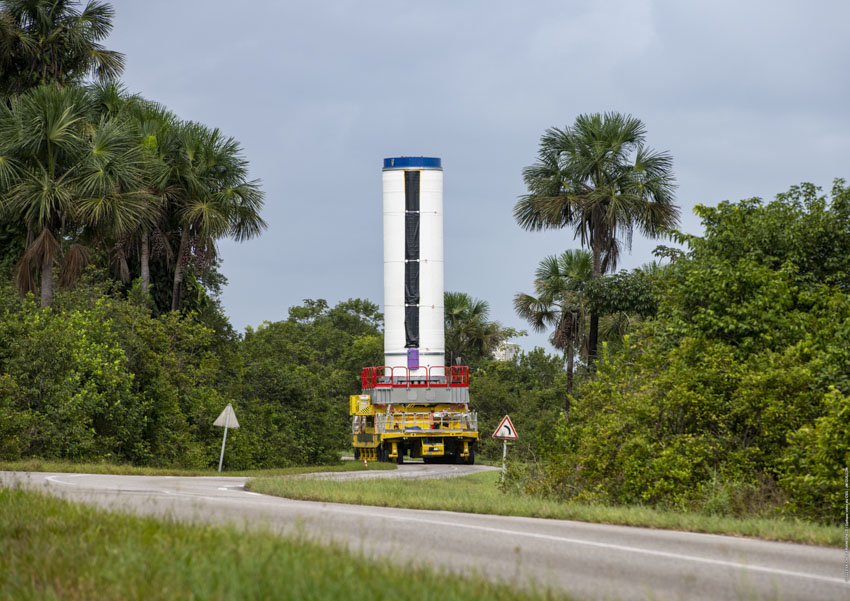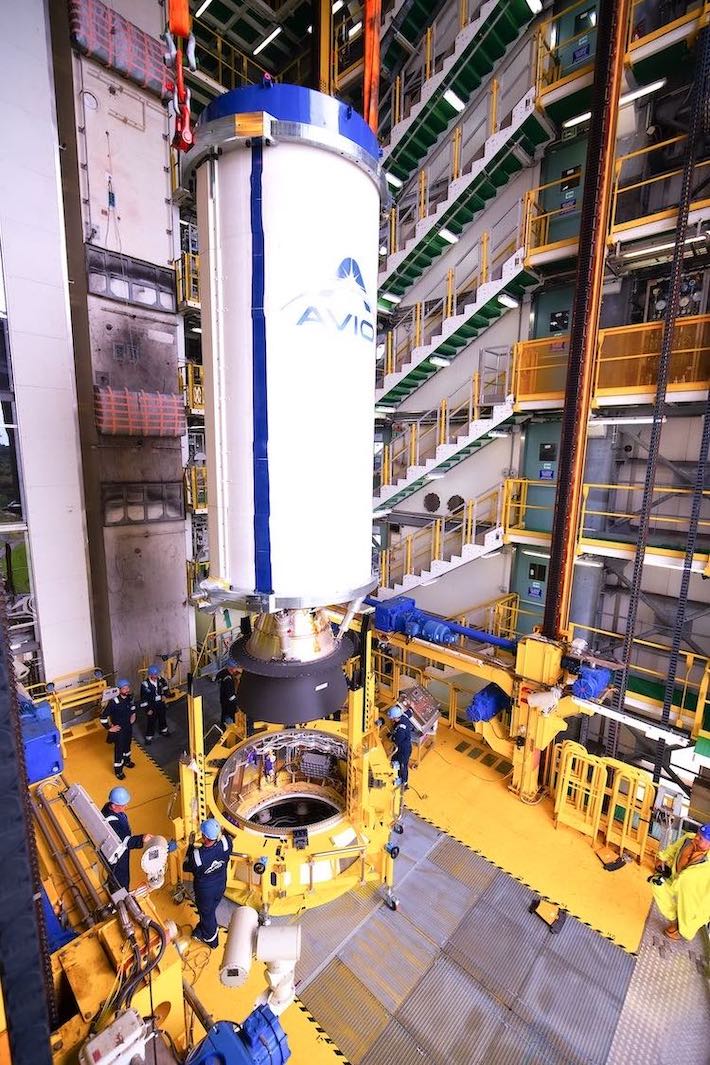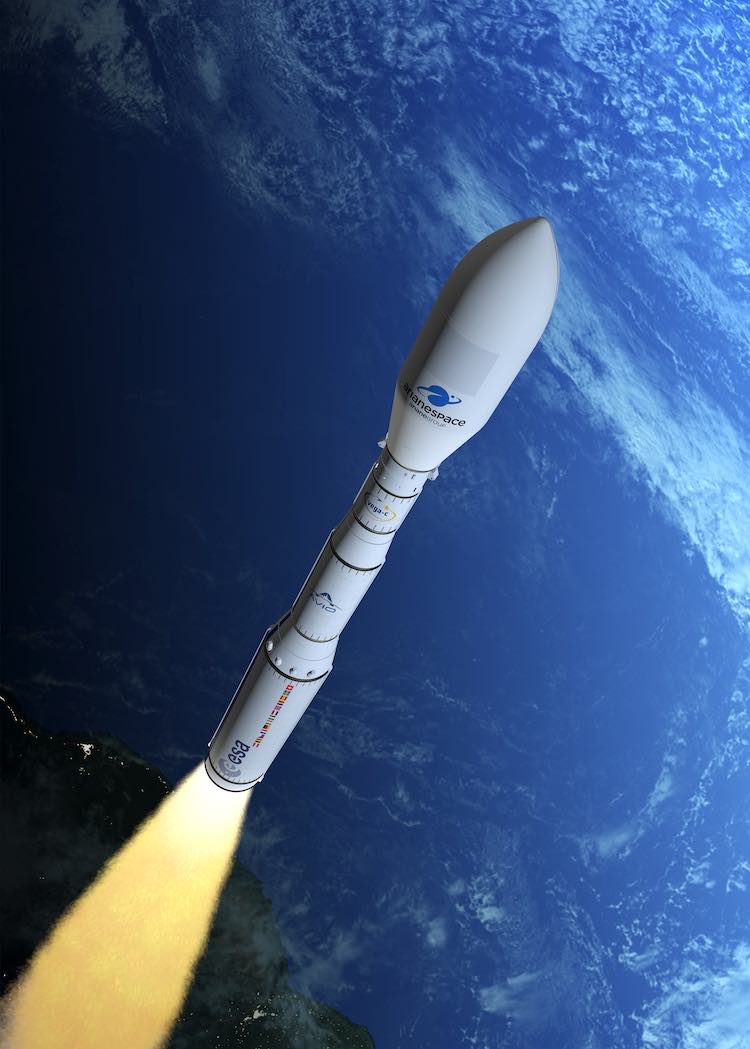
Europe’s new Vega C launcher is on track for its inaugural flight from the European spaceport in Kourou, French Guiana, during the second half of June, according to officials managing final phases of integration.
Stefano Bianchi, the European Space Agency’s head of flight programs, told Spaceflight Now: “A ground qualification review was finalized March 30 and a Flight Readiness Review took place mid-April. With the transfer of the first stage and second stage integration complete, the maiden flight launch campaign is well underway.”
ESA began developing the more powerful Vega C, which builds on the success of the Vega rocket, three years after its first launch in 2012 in response to evolving market and long-term institutional needs,
“Of course, ESA is playing a key role in the maiden flight, currently scheduled to take place by the end of June,” said Bianchi. “As qualification authority and operator of the flight, ESA will give the final green light. It is the first time we will test in flight the full system of Vega C and so the mission is fundamental for future missions.”
Launcher integration for Vega C’s inaugural flight, designated VV21, began with the P120C solid-fuel first stage being delivered to the Vega Launch Zone (ZLV) in French Guiana on April 15. An interstage segment to join the P120C first stage with the Zefiro 40 second stage followed on April 22.
Like its predecessor, Vega C features three solid-fuel stages and a liquid-fueled fourth stage. But it also brings two great improvements. One is an extra 800 kilograms (1,760 pounds) of payload capacity — an increase of more than a third, to about 2.2 metric tons — but for a similar launch cost.

Vega C also features a new, more powerful first stage, the P120C, based on Vega’s P80. Atop that is a new second stage and then the same Zefiro 9 third stage used on Vega. The new AVUM+ fourth stage can remain operational in space for longer than Vega’s AVUM, to enable extended missions.
With its larger main stages and bigger fairing, Vega C measures 34.8 meters (114 feet) high, nearly 5 meters (16 feet) taller than Vega.
Another Vega C innovation allows its P120C first stage to do double service, with either two or four acting as strap-on boosters for the more powerful Ariane 6 rocket.
Marino Fragnito, senior vice president and head of the Vega business unit at Avio, the Italy-based space propulsion company, says the P120 was the best choice Europe could make to scale economy of production and use the same motor for more flights.
“This was an easy way to help close a business case,” he said. “If we increase the number of items which are common between Ariane 6 and Vega we have launchers which are less expensive.”

Vega C’s maiden flight will loft the Italian Space Agency’s LARES-2 — Laser Relativity Satellite 2 — into orbit alongside six European research CubeSats. LARES 2 is a 36.4-centimeter (14.3-inch) diameter passive sphere with laser mirrors for the study of Earth’s gravitational field.
Its main objectives are to facilitate measurements of gravitational and fundamental physics, and accurate determinations in space geodesy and geodynamics. Scientists hope to achieve accurate testing of “frame-dragging,” an intriguing phenomenon predicted by Einstein’s theory of general relativity.
In April, the European Commission and ESA selected Vega C to launch Sentinel 1C in the first half of 2023. The satellite, which will use synthetic aperture radar technology from a 690-kilometer (428-mile) sun-synchronous orbit, will add to the already operational Sentinel 1A and 1B for environmental monitoring and security applications.
